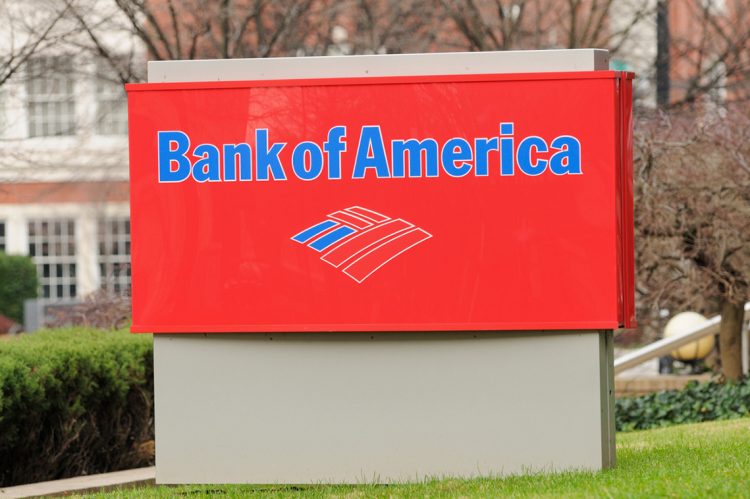A big news story recently was the collapse of Silicon Valley Bank, which happened after the bank’s announcement it would have to sell part of its bond holdings at a major loss, subsequently causing a run on the bank. The tech-focused lender was taken over by federal regulators, and we’ve been following the fallout ever since.
The story reminds me of another Northern California banking narrative that began in the small Italian town of Acereto…
Amadeo Pietro (“A.P.”) Giannini was born in San Jose, California, the child of Maria Virginia De Martini and Luigi Giovanni, who left Acereto just a few months before Amadeo’s birth on May 6, 1870. When Giannini’s father died, his mother remarried the owner of a produce business and moved the family to San Francisco. As the A.P. Foundation describes, Giannini left school at the age of 13 to work full-time for his stepfather. Just six years later, Giannini was a partner in the successful produce enterprise, servicing farms throughout the Santa Clara Valley.
In 1892, Giannini married Florinda Agnes Cuneo, the daughter of wealthy Italian immigrants who owned a substantial share in Columbus Savings & Loan, a small bank located in San Francisco’s “Little Italy,” located in a neighborhood known as North Beach. At age 31, Giannini decided to retire, selling his interest in the produce business. The Wall Street Journal estimates that at his retirement, he was worth about $300,000 or the equivalent $9 million today. But Giannini’s business career was far from over.
Not even a year after Giannini’s “retirement,” Giannini’s father-in-law died, leaving Giannini to take over his position on the Columbus Savings & Loan board. For Giannini, this new role was a chance to help the city’s growing immigrant population, who had trouble securing loans. The directors disagreed. Frustrated, yet far from defeated, Giannini left the board and on October 17, 1904, founded the Bank of Italy with $150,000 raised from family and friends. Coincidentally, he headquartered the bank in a converted saloon that was directly across the street from the Columbus Savings & Loan. Giannini said this new bank was for the “little fellow” and was determined to service the hardworking, predominantly Italian immigrants from San Francisco’s Little Italy.
During the early 1900s, banks only worked with the wealthy. If you were poor, things like savings accounts, checking accounts, even home mortgages or auto loans simply didn’t exist – at least not for you. Those who were poor had to hide their money under mattresses and borrow funds from loan sharks at outrageously high rates. Giannini’s Bank of Italy gave these people hope. He focused on lending to merchants, farmers, and laborers, encouraging immigrants to transfer their money from beneath their mattresses to the safety of his newfound bank. It wasn’t just a whole new way of banking; it was the democratization of the entire banking system, and from an old saloon-turned-bank in San Francisco, Giannini led the charge.
Then, as most stories do, this one took an unexpected turn. On April 18, 1906, a massive earthquake shook San Francisco. Lasting less than a minute, the earthquake sent the city into shambles. More than 3,000 people died from the destruction and the subsequent fires it caused. Giannini was somehow able to get to the Bank of Italy building and salvage about $80,000 in gold and cash, loading everything into two horse-drawn produce wagons, which he discretely covered with crates of oranges then wheeled to his home in San Mateo, about 18 miles from the bank. (The Wall Street Journal reported Giannini said the money smelled like oranges for weeks.)
His careful retrieval of the bank’s funds paid off. While other city banks struggled to recover, Giannini set up a makeshift bank on the docks near North Beach. He leaned a wooden plank on top of two barrels and used that as his “desk.” On a cardboard sign nearby, he wrote: BANK OF ITALY: OPEN FOR BUSINESS.
From his new Bank of Italy “headquarters,” Giannini met with customers who were able to secure loans with a simple handshake, allowing them to get the money they needed to survive and rebuild. His efforts are widely regarded as pivotal in the redevelopment of the city. The Wall Street Journal, citing a 1921 interview, published Giannini’s remarks about his work: “The ‘glad hand’ is all right in sunshine,” he said. “But it’s the helping hand in a dark day that folks remember to the end of time.”
After the 1906 earthquake, Giannini wanted to do more to help. He decided that instead of one central banking location, he’d open “branches” of his bank to service additional customers. In 1909, the first Bank of Italy branch opened in San Jose, and in 1913, branches opened throughout Southern California. On November 1, 1930, Bank of Italy merged with another bank, and Giannini’s new bank was called Bank of America, which in time became the largest banking institution in North America.
Customers weren’t the only beneficiaries of Giannini’s vision. In 1923, when Giannini set up a motion-picture loan division at the bank, hundreds of films were financed, including “West Side Story,” and “It’s a Wonderful Life.” When a filmmaker named Walt Disney couldn’t secure the loan for his first feature-length film, Giannini’s bank loaned him the $1.7 million and Disney finished “Snow White and the Seven Dwarfs.” Giannini’s bank also helped finance “Pinocchio,” “Peter Pan,” “Cinderella” and later, Disneyland. And when an innovative engineer named Joseph Strauss came to Giannini with the idea to build a bridge spanning the Golden Gate Strait, Giannini famously asked Strauss how long the bridge would last. “Forever,” the engineer told him, to which Giannini replied, “California needs that bridge.” In 1933, with Giannini as a financial guarantor, construction of the Golden Gate Bridge began.
So, what’s the message? Before Giannini retired (again) in 1945, he worked almost every day on the main floor of Bank of America’s headquarters, interacting with customers well into his 70s. After his passing in 1949, Giannini left behind just $500,000. Famously, he believed in only keeping as much money as he absolutely needed. When Transamerica Corporation gave him a $1.5 million bonus, he donated it to the University of California to develop a school for agriculture economics. Beyond his inspiring selflessness, Giannini’s tale reminds us that when a crisis occurs, we must be nimble – rolling that vegetable wagon down the road, nailing the wooden plank to the barrels on the wharf, and serving everyone. It’s not when things are simple and quiet that legends like Giannini are made. It’s during times of upheaval when the real heroes of our story emerge.
This article is adapted from Blefari’s weekly, company-wide “Thoughts on Leadership” column from HomeServices of America.












